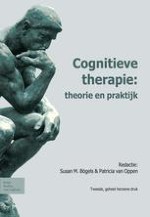2011 | OriginalPaper | Hoofdstuk
15 Cognitieve therapie bij psychose
Auteur : Mark van der Gaag
Gepubliceerd in: Cognitieve therapie: theorie en praktijk
Uitgeverij: Bohn Stafleu van Loghum
2011 | OriginalPaper | Hoofdstuk
Auteur : Mark van der Gaag
Gepubliceerd in: Cognitieve therapie: theorie en praktijk
Uitgeverij: Bohn Stafleu van Loghum
Print ISBN: 978-90-313-8309-2
Elektronisch ISBN: 978-90-313-8310-8
Copyright: 2011
